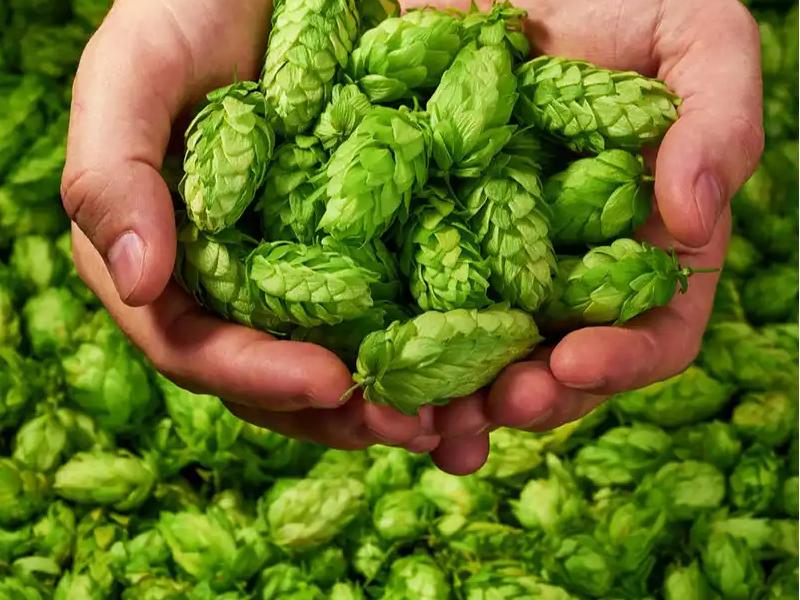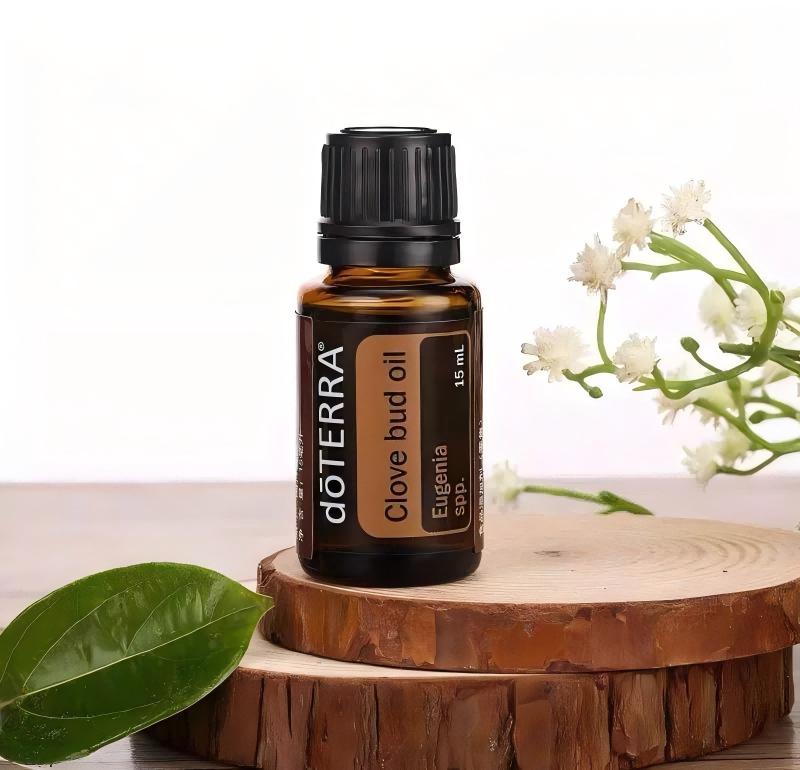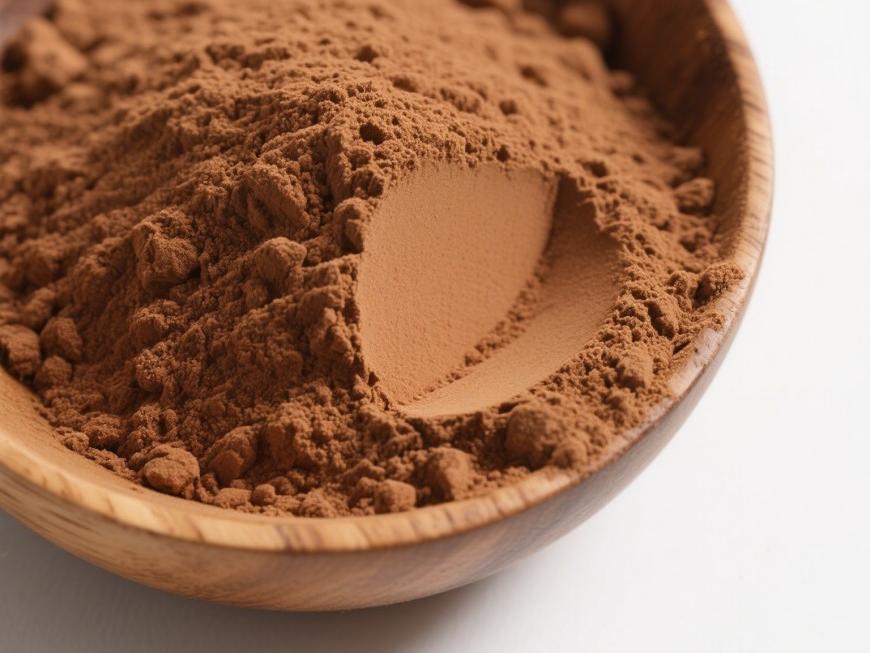Natural Hop Extract Fuels Innovation in Wellness Product Formulations
Against the backdrop of today's health-conscious consumption upgrade, an increasing number of brands are committed to developing natural, safe, and functionally supported food and health products. Consumer focus on “clean labels” and “ingredient traceability” is driving the market toward modern applications and deep development of traditional plant-based materials. Within this trend, hop extract—a highly active ingredient derived from the natural plant Humulus lupulus L.—is gaining significant industry attention.
Hops, also known as humulus or snake flower, are a time-honored natural plant with longstanding applications across food and health sectors. Today, Green Spring Technology leverages modern extraction techniques to efficiently preserve multiple functional components—such as resins, polyphenols, and volatile oils—within hop extracts. This provides safe, stable, and potent natural raw material support for developing diverse health products, empowering brands to achieve differentiated innovation in functional foods, dietary supplements, and related fields.

1 Natural Hop Extract: Synergistic Multi-Active Components Empowering Health Product Innovation
Rich in diverse natural bioactive compounds, hop extracts represent an ideal choice for innovative health product formulations. Their core functional components primarily include the following categories:
1.1 Core Functional Resin Components
Soft resins in hop extracts constitute their primary bioactive source, with α-acids (including humulone) and β-acids (including lupulone) being particularly significant. These components exhibit outstanding antibacterial and antioxidant properties, providing a scientific foundation for natural preservation and oxidation protection. Modern extraction techniques strictly control the process to maximize the stability of these active ingredients, ensuring product efficacy.
1.2 Polyphenolic Active Compounds
Hops contain abundant polyphenolic compounds, including:
· Phenolic acids: Such as vanillic acid, protocatechuic acid, ferulic acid, etc., with antioxidant properties
· Catechins: Including catechin, epicatechin, etc., providing antioxidant support
· Proanthocyanidins: Primarily procyanidins, with catechin monomers constituting over 70%
· Flavonoids: Notably, humulone, a unique isoprenoid flavonoid specific to hops, exhibiting distinctive biological activity
These polyphenolic components collectively form the antioxidant foundation of hop extracts, making them premium raw materials for functional foods and health products.
1.3 Natural Aroma Compounds
Hop essential oil contains over 200 volatile components, primarily hydrocarbons, oxygenated compounds, and sulfur-containing compounds. These natural aroma compounds not only provide pleasant fragrance but may also possess additional bioactivity, offering expanded possibilities for product development.
1.4 Polysaccharides and Other Components
Hops also contain polysaccharide compounds composed of various monosaccharides such as arabinose, galactose, and fucose. These components offer diverse options for further product development.
As a professional hop extract supplier, we provide standardized extracts in multiple specifications, ensuring stable active ingredient content and consistent quality. Our products find extensive applications in functional foods, dietary supplements, health beverages, and personal care products, delivering natural, effective, and safe ingredient solutions for your product innovations. Discover Our Comprehensive, Compliant, and Consistent Standardized Hop Extract Ingredient Solutions.
2 Natural Ingredient Hops Extract: Multi-Active Components Empowering Health Product Innovation
Hops, a time-honored natural botanical ingredient, demonstrate broad application potential in modern health products. Its extracts are rich in diverse bioactive components, opening new possibilities for product innovation.
⭐ Natural Ingredient Characteristics
The α-acids and β-acids in hop extracts possess unique properties suitable for diverse product systems. Research indicates these components exhibit positive effects against various microorganisms, making them ideal natural functional ingredients for health product formulations.
⭐ Antioxidant & Health Support
Hops are rich in flavonoids and polyphenols, demonstrating strong in vitro antioxidant capacity. Experiments demonstrate that hop extracts perform well in multiple antioxidant evaluation systems, including free radical scavenging capacity and reducing power assays. These characteristics make them an ideal ingredient choice for supporting healthy living.
⭐Relaxation and Emotional Balance
Hops have traditionally been used to promote relaxation and emotional equilibrium. Modern research explores their potential in regulating mental and physical states, positioning them as functional ingredients for formulations with calming properties that help consumers maintain optimal well-being.
⭐ Plant-Based Active Ingredients
Unique components in hops, such as xanthohumol, exhibit distinctive biological activity. Research suggests these compounds may positively influence the body's internal equilibrium, offering new avenues for health product development—particularly suited for innovations targeting modern life stressors.
⭐Natural Active Support
Hops extract demonstrates multifaceted biological activity. Its components, including xanthohumol, have been studied for their broad positive effects, offering a premium raw material choice for developing products that support healthy living.
As your ingredient partner, we specialize in providing high-quality, standardized hop extracts that ensure stable active components and consistent efficacy. Our products find broad application in functional foods, dietary supplements, health beverages, and personal care products, delivering safe, effective, and differentiated natural ingredient solutions for your product innovations.

3 Green Spring Technology High-Quality Hops Extracts Empowering Health Product Innovation
Natural hop extracts, with their rich bioactive components and diverse health application potential, are opening new avenues for product innovation. Leveraging modern extraction techniques and stringent quality control standards, Green Spring Technology provides you with high-quality, highly stable hop extract raw materials.
Their core advantages include:
· High Active Content: Proprietary technology maximizes retention of key functional components like alpha acids, beta acids, and xanthones, ensuring consistent stability and potency across batches
· Natural & Safe: Entirely chemical-free, using pure physical extraction processes. Meets natural clean label requirements and suits diverse applications including food, beverages, and dietary supplements
· Customized solutions: Tailored product specifications, solvent types, and concentration levels to support brand differentiation and innovation
Green Spring Technology is committed to being your trusted natural ingredient partner, continuously exploring innovative applications of hop extracts in health products. We invite industry partners to collaborate in developing natural health products that meet modern consumer demands, injecting innovative vitality into the market.
Contact us at helen@greenspringbio.com or WhatsApp: +86 13649243917 for samples and detailed product information.
References
[1]Xinjiang Military Region Logistics Department Health Bureau. Manual of Traditional Chinese Herbal Medicine in Xinjiang [M]. Urumqi: Xinjiang People's Publishing House, 1970.
[2]State Administration of Traditional Chinese Medicine. Chinese Materia Medica [M]. Shanghai: Shanghai Science and Technology Press, 2005.
[3]Zhu Enjun. Current Status of Development and Application of Hops Products at Home and Abroad [J]. Journal of Agricultural Products Processing, 2006(5): 60.
[4]Luo Huimin, Li Lin. Study on Polyphenolic Compounds and Bitter Substances in Hops [J]. Beer Technology, 2002(9): 68.
[5]Liu Yumei. Research Progress on the Chemical Composition and Pharmacological Effects of Hops [J]. Food Science, 2009, 30(23): 521.
[6]Xiong Haoping. Study on the Chemical Composition of Hops and the Purification Technology of Humulone [D]. Hangzhou: Zhejiang University, 2005.
[7]Martino Forino, Simona Pace, Giuseppina Chianese, et al. Humidifucol and bioactive prenylated polyphenols from hops (Humulus lupulus cv. “Cascade”) [J]. J Nat Prod, 2016, 79(3): 590.
[8]Liu Shaqing. Review of bitter substances in hops [J]. Beer Science and Technology, 2007 (4): 22.
-
Prev
Natural Xanthohumol in Hops Extract Enhances Bone Health Product Upgrades
-
Next
Green Spring Technology's Hop Extracts Enhance Craft Beer Formula Innovation


 English
English French
French Spanish
Spanish Russian
Russian Korean
Korean Japanese
Japanese




